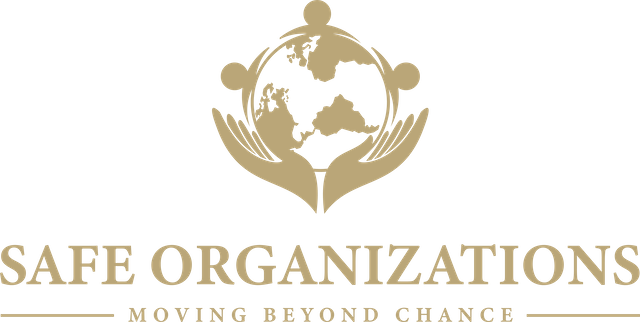Accountability in Action: Building Safe Organizations
Accountability, Transparency, and Safeguarding: Meeting the Growing Demands of Donors, Communities, and Program Participants
In recent years, the demand for greater accountability and transparency within non-governmental organizations (NGOs) has intensified. Donors, communities, and program participants alike are calling for more clarity about how funds are used, how decisions are made, and—critically—how organizations safeguard the individuals they serve. These demands reflect a broader societal push for ethical conduct, responsibility, and the prevention of abuse or misconduct across all sectors. To meet these expectations, safeguarding must go beyond surface-level compliance; it requires embedding accountability into every layer of organizational culture and practice.
The Growing Call for Accountability and Transparency
The philanthropic landscape has evolved. Today’s donors are not content with receiving high-level reports on outcomes and activities. They seek a deeper understanding of how their contributions create impact and assurance that funds are used ethically. This heightened expectation extends to the integrity of internal processes, governance, and safeguarding practices.
NGOs often operate in complex, high-risk environments where vulnerable communities face significant challenges. Public scrutiny in such settings has intensified, making trust an essential asset for organizational success. Without trust, donor support dwindles, public confidence erodes, and communities may disengage from programs intended to serve them. To sustain and grow trust, NGOs must demonstrate transparency in their operations and decision-making—especially regarding safeguarding efforts. Protecting vulnerable populations should not be a secondary consideration but a core organizational priority.
Accountability From Within
True accountability begins internally. It cannot simply be a response to external donor requirements or policies. When accountability is an intrinsic part of an organization’s culture, it lays the foundation for safeguarding practices that are meaningful and sustainable. This internal commitment ensures safeguarding is more than a checklist—it becomes a dynamic, continuous process integrated into every decision and action.
An internal culture of accountability drives ethical practices across all levels of the organization. It shapes how policies are implemented, how staff interact with each other and with communities, and how decisions are made. Without this commitment, safeguarding risks becoming superficial, performative, or ineffective—ultimately undermining trust and leaving individuals at risk.
Leadership and Accountability
Leadership integrity is essential to fostering a culture of accountability. When leaders treat safeguarding as a response to external pressures—such as donor scrutiny or media attention—rather than as a core organizational value, their actions risk being perceived as insincere or reactive. Genuine leadership in safeguarding means embedding these principles into the fabric of the organization, ensuring they guide everyday practices.
Effective leadership also involves critical thinking and humility. Leaders must reflect on how their decisions impact their teams, communities, and broader organizational goals. They should seek the expertise of skilled practitioners to inform safeguarding strategies and create actionable, transparent policies and practices. By fostering an environment of honesty, collaboration, and continuous learning, leaders demonstrate true accountability. This commitment to safeguarding must be ongoing, with regular reflection and adaptation to address emerging risks and challenges.
Championing Safeguarding in the Absence of Leadership
When leadership fails to model accountability and integrity, safeguarding must still be championed. This requires individuals to engage in critical thinking, challenge assumptions, and advocate for ethical practices. Independent action and vigilance become crucial in maintaining a culture of safeguarding, even in challenging environments. By prioritizing transparency, collaboration, and ethical decision-making, individuals can uphold safeguarding principles and influence positive change, regardless of leadership’s strength or direction.
A Lens of Personal Accountability
Personal accountability is equally vital. It requires individuals at all levels to take ownership of their actions, decisions, and their impact on others. This involves aligning behaviors with organizational values, recognizing mistakes as opportunities for growth, and fostering trust through consistent, ethical actions. When individuals hold themselves accountable, they set a standard that inspires others, creating a culture of mutual responsibility and continuous improvement.
Cultural Humility and Safeguarding
Cultural humility is an essential component of safeguarding. Unlike cultural competence, which emphasizes knowledge about different cultures, cultural humility focuses on self-awareness and the recognition that no one can fully understand another’s lived experience. By fostering curiosity, respect, and openness, cultural humility enables organizations to value diverse perspectives and create inclusive, responsive safeguarding practices. This approach validates the unique experiences of each individual, ensuring everyone feels seen, heard, and valued.
Belonging and Organizational Culture
Creating a sense of belonging is fundamental to fostering a strong organizational culture. Belonging goes beyond acceptance; it involves active contribution to a shared mission and mutual alignment of values. While organizations must create inclusive, welcoming spaces, individuals must also ensure their values align with those of the organization. This mutual investment enhances collaboration and strengthens the overall safeguarding framework.
Conclusion
Safeguarding is not just a policy or a requirement; it is a commitment to ethical responsibility and the protection of those experiencing vulnerability. By embedding accountability and cultural humility into their operations, organizations can ensure safeguarding becomes an integral part of their identity. When leaders and individuals alike take ownership of this commitment, they create a culture of trust, respect, and continuous improvement—ultimately fostering environments where everyone can thrive.
